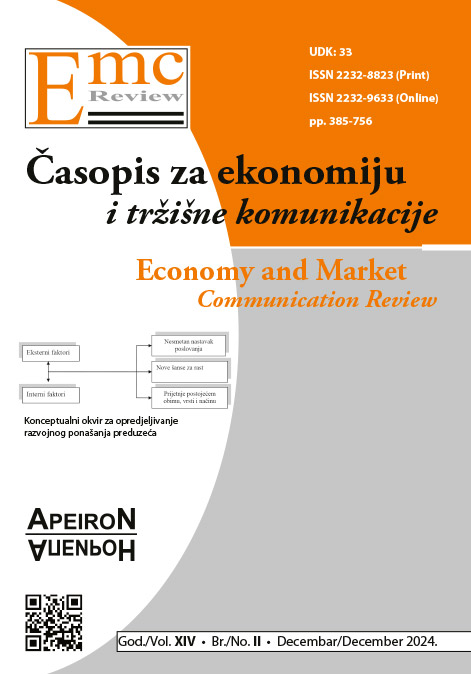KEY FACTORS OF INFLUENCE OF SME OWNERS ON SUCCESSFULL AUTOMATION OF HR PROCESSES
DOI:
https://doi.org/10.7251/EMC2402699DKeywords:
automation, processes, leadershipAbstract
The paper explores the impact of leadership on the introduction and implementation of automation in the human resources (HR) sector of small and medium-sized enterprises (SMEs), emphasizing the importance of a strategic approach. Automation in HR has the potential to significantly improve operational efficiency. However, the ultimate success of such initiatives is highly contingent upon leaders’ ability to plan strategically and execute changes effectively.The empirical analysis focuses on leaders who adopt a strategic framework when integrating automation. These leaders excel in setting clear objectives, analyzing available resources, and foreseeing potential challenges, which results in streamlined processes and improved outcomes. The findings underscore that a strategic approach not only enhances operational efficiency but also facilitates smooth transitions within HR operations. Key success factors identified in the study include meticulous attention to detail, well-defined goal-setting, and effective resource allocation. Leaders’ ability to anticipate obstacles and develop strategies to address them is shown to minimize risks and maximize the benefits of automation. This proactive management approach ensures that the introduction of automation aligns with organizational goals and employee needs, fostering a balanced and productive transition. The paper emphasizes that strategic leadership is central to the successful adoption of technological changes in HR. By focusing on long-term objectives, strategic leaders not only drive efficiency but also create a resilient foundation for future innovations. These leaders play an instrumental role in optimizing HR processes, ultimately contributing to the broader success of the organization. The research provides valuable insights for managers aiming to implement automation in their HR departments. It serves as a practical guide, illustrating the critical role of effective leadership in navigating the complexities of technological change. Strategic leaders act as catalysts, bridging the gap between automation’s technical aspects and its operational implications.In conclusion, the study highlights the profound influence of leadership on the effectiveness of HR automation. Leaders who strategically plan and manage the automation process enable their organizations to achieve enhanced efficiency and align technological advancements with business objectives. The findings affirm that strong leadership is pivotal in realizing the full potential of automation, ensuring both immediate gains and sustained growth. By aligning leadership strategies with automation goals, organizations can better position themselves to tackle challenges and leverage technological advancements. Ultimately, the research underscores the transformative power of strategic leadership in achieving operational excellence and long-term success in the HR domain. Ultimately, the research underscores the transformative power of strategic leadership in achieving operational excellence and long-term success in the HR domain. Beyond these immediate impacts, the study suggests that strategic leadership in automation fosters a culture of innovation within the organization. Leaders who embrace automation as a tool for growth encourage continuous learning, adaptability, and collaboration among their teams. This approach not only ensures the successful implementation of automation but also strengthens the organization’s ability to remain competitive in a rapidly evolving business environment. By cultivating such a forward-thinking mindset, organizations can unlock new opportunities for development and maintain a strong position in their respective markets.
